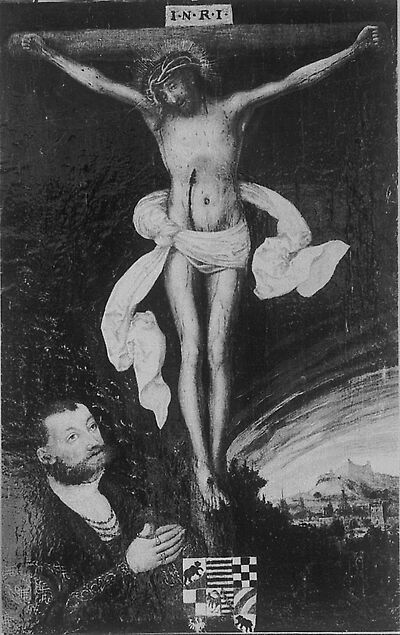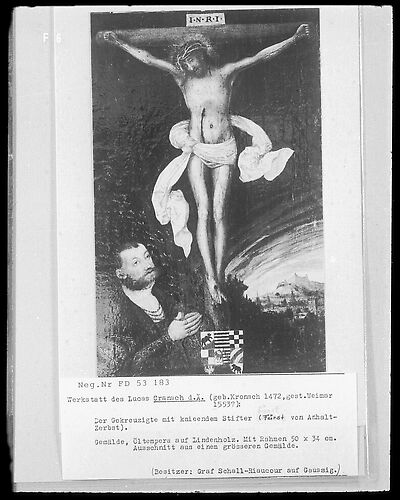The crucifix is shown from the front and stands out against a dark background, which is relieved only at the bottom right by the depiction of a landscape with a hill. Drops of blood cover Christ's slender body, the stigmata mark his limbs and his loincloth billows out ornamentally either
The crucifix is shown from the front and stands out against a dark background, which is relieved only at the bottom right by the depiction of a landscape with a hill. Drops of blood cover Christ's slender body, the stigmata mark his limbs and his loincloth billows out ornamentally either side of him in a manner typical of Cranach. His head is inclined to the left, where the donor can be seen, kneeling with his hands folded in prayer, and acknowledging Christ as his Saviour. The Anhalt coat of arms is shown prominently at the foot of the cross.
[cda 2023]
The shield at the foot of the cross has been divided into nine parts to display the various coats of arms from the House of Anhalt:
The field with yellow and black horizontal stripes is the ancient coat of arms belonging to the House of Anhalt: Lords of Bernburg, Plötzkau, Köthen and Zerbst, Counts of Aschersleben, Ballenstedt and Anhalt
The field with the half eagle and horizontal black and yellow stripes with a green crancelin running diagonally from left to right could represent the coat of arms belonging to the cadet branch of the House of Anhalt-Zerbst: Lords of Köthen, Zerbst, Plötzkau and Dessau, Princess of Anhalt-Zerbst, Anhalt-Köthen and Anhalt-Dessau issued by Siegfried, 3rd son of Heinrich I, Prince of Anhalt (Siegfriedine line)
The fields showing a climbing bear and the black and white checkerboard are possibly additional arms representing the House of Anhalt as Lords and Counts of Bernburg and as Counts of Aschersleben
[cda 2024]

